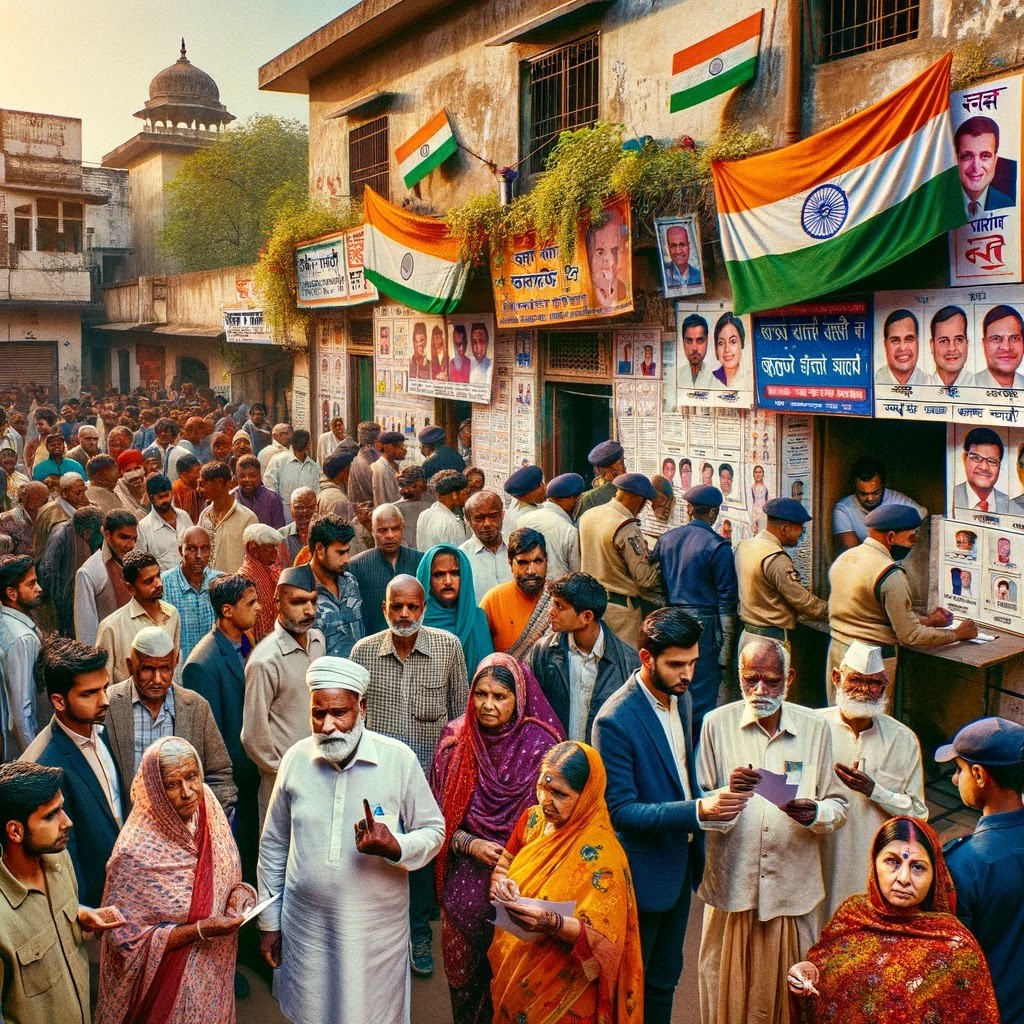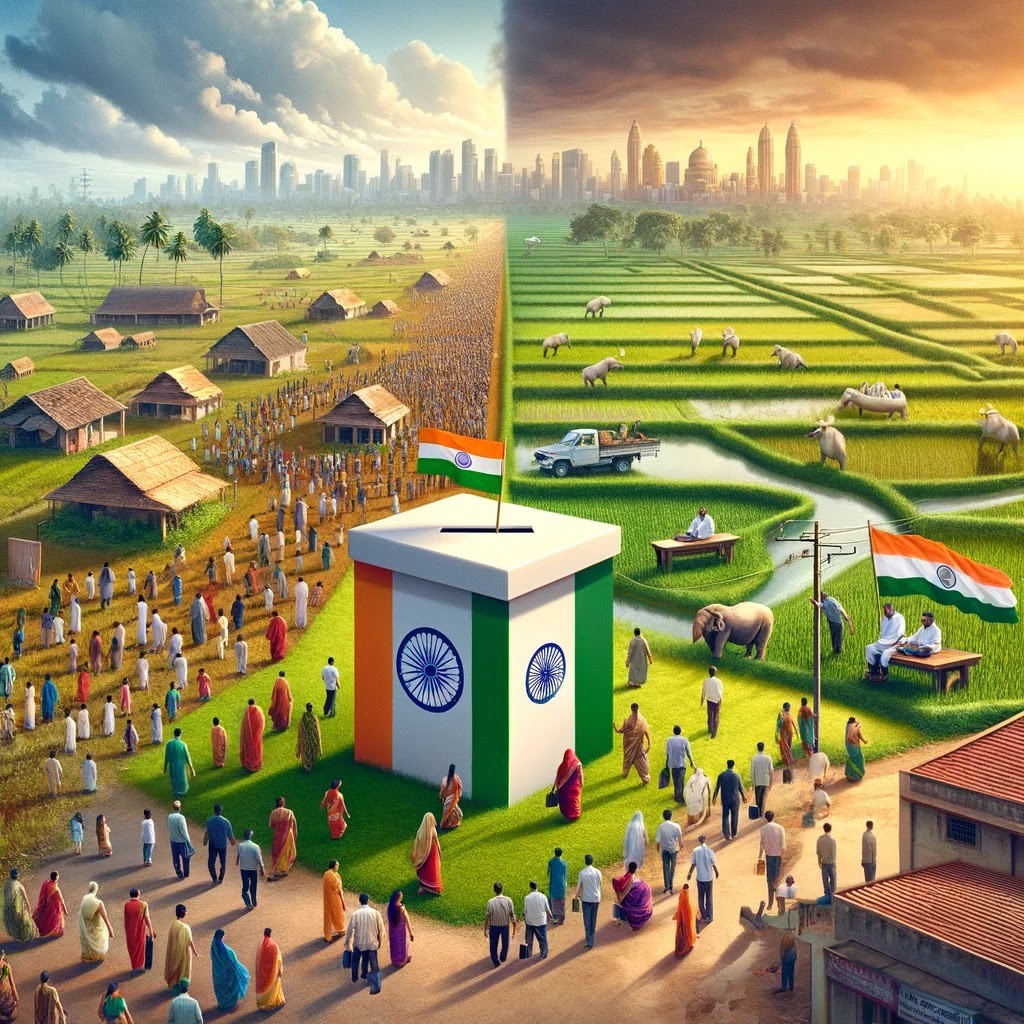As country readies 2024 India Poll Schedule for the massive General Elections, one key factor that political parties and analysts are keeping a close eye on is the difference in voting preferences between rural and urban areas. These two segments often have contrasting priorities, influences, and concerns that shape their voting choices in unique ways.
The Money Matter
Political Party Manifestos 2024 for voters mentions in villages, whose livelihoods depend heavily on agriculture and related work, money-related factors like farm incomes, availability of loans, and prices of crops and produce are hugely important in deciding who to vote for. Development projects aimed at improving rural infrastructure, creating jobs, and implementing welfare schemes for villages tend to be popular among this segment. Political promises centered on agriculture reforms, loan waivers, and overall rural development hold a lot of weight in influencing rural voting preferences.
On the flip side from Political Party Manifestos 2024, urban voters are more tuned into issues like job opportunities, cost of living, city infrastructure, and access to good education and healthcare. Economic policies impacting industries, service sectors, and urban employment are key drivers of urban voting behavior. Political narratives focused on city development, transportation, and improving quality of life strike a chord with this group.

The Development Drive
Beyond just money matters, development initiatives play a huge part in swaying voter choices. In rural areas, successfully implementing schemes that improve access to basic amenities like electricity, clean water, and sanitation can tilt the balance. Initiatives promoting better connectivity, education, and healthcare in villages are also highly influential.
For urban voters, the promise of smart cities, efficient public transport systems, and tackling urban challenges like pollution and traffic congestion can make or break their vote. How well (or poorly) development projects in these areas have been carried out significantly impacts voting patterns in cities and towns.
The Narrative Game
The messaging and narrative pitched by political parties also goes a long way in shaping voter preferences across the rural-urban spectrum. In villages, narratives centered on farmer welfare, agriculture reforms, and rural empowerment tend to strike a chord. Urban voters, on the other hand, are more receptive to narratives around economic growth, job creation, and sustainable urban development.
However, it’s important to note that these voting patterns aren’t set in stone. Segments within rural and urban populations may exhibit diverse preferences based on factors like age, gender, and socioeconomic status.
As election season heats up, political parties and analysts will be closely watching these dynamics, employing market research tools like surveys, focused discussions, and data crunching to gauge voter sentiment and tailor strategies accordingly. Understanding and effectively addressing the unique concerns of rural and urban voters could prove decisive in tilting the scales in the 2024 polls.
Digging Deeper: The Socio-Cultural Fabric
While economic factors and development narratives are undoubtedly influential, it’s essential to recognize the deeper socio-cultural undercurrents that shape voting preferences across India’s diverse landscape. Issues such as caste, religion, and regional identities can often intersect with rural and urban divides, adding intricate layers to the analysis.
For instance, in certain regions, caste dynamics may hold more sway in rural areas, while urban voters might be more attuned to secular, development-focused narratives. Similarly, religious affiliations and regional pride can cut across rural-urban lines, creating unique voting blocs.
This interplay between socio-cultural factors and the rural-urban divide underscores the importance of granular, localized analysis and targeted campaigning strategies. Political parties must navigate this complex tapestry, employing market research techniques to understand the nuances of voter sentiment at the grassroots level.
The Road Ahead
As the world’s largest democracy prepares for 2024 India Poll Schedule for another historic election, unravelling the intricacies of rural and urban voting patterns will be crucial for political parties and stakeholders alike. By leveraging market research tools, data analysis, and a deep understanding of the diverse socio-economic and cultural fabric, they can craft narratives and strategies that resonate with these distinct voter segments.
Ultimately, the ability to bridge the rural-urban divide and address the unique aspirations of both these segments could prove to be the deciding factor in shaping the nation’s political landscape for years to come.
Summary
As India gears up for the 2024 polls, a crucial factor is the contrasting voting preferences between rural & urban areas. Rural voters are swayed by farm incomes, agriculture policies & rural development, while urban voters prioritize job opportunities, cost of living & city infrastructure. Political narratives play a key role – rural voters resonate with farmer welfare & rural empowerment, urban voters are drawn to economic growth & sustainable cities.
However, this divide is layered with socio-cultural factors like caste, religion & regional identities.
To navigate this complex landscape, parties must employ market research & data analysis to understand voter sentiments at the grassroots. Addressing unique rural & urban aspirations could prove decisive in 2024.


